
searchMenu

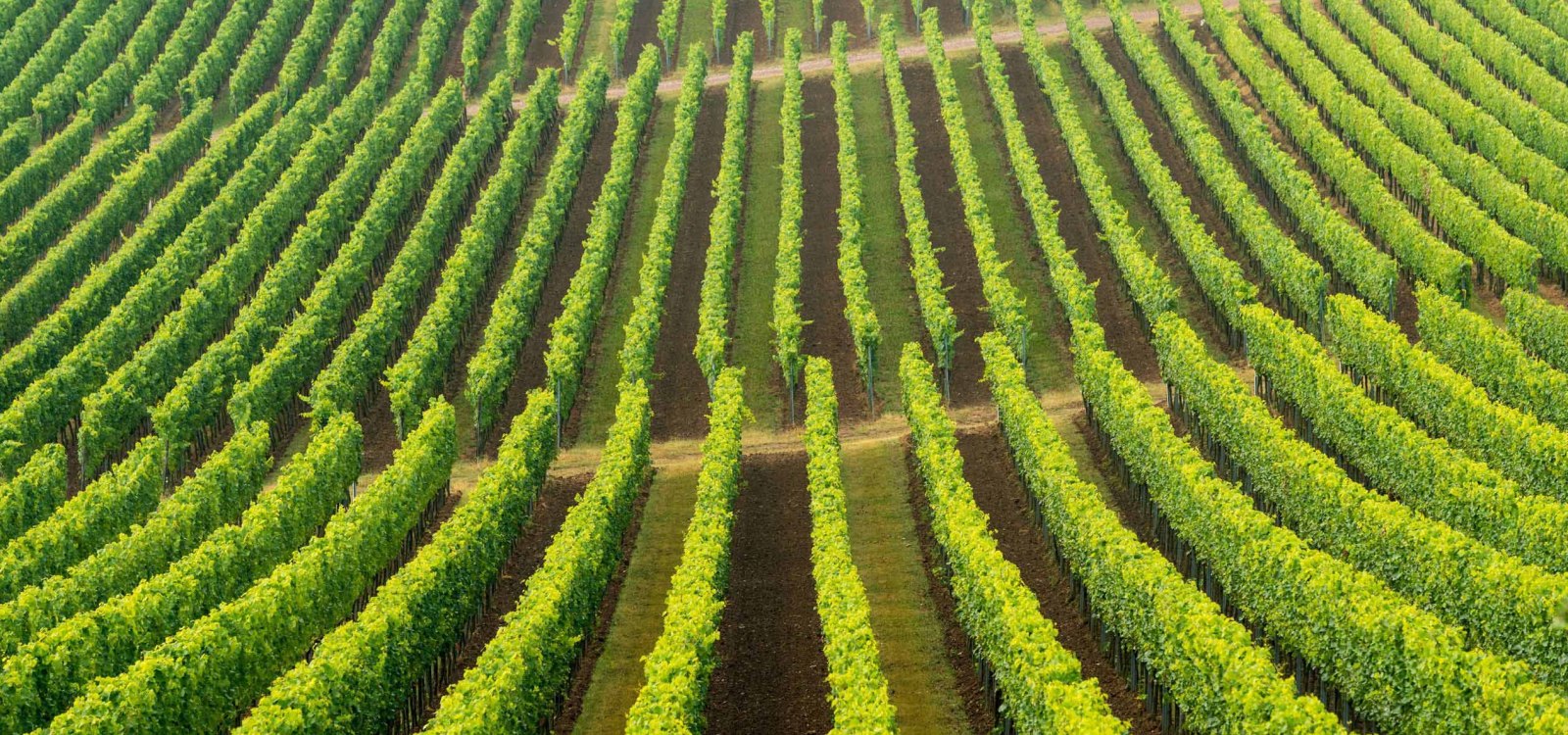
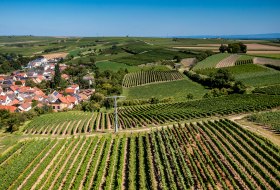
Kranz family or wrath around the village? Is the single vineyard placed like a wreath (German: “Kranz”) around Dalheim? That would be a nice explanation, but unfortunately no. The site does, however, lie around one side of the village, from east to south to west. It was mentioned in a document in 1418 with the name "off dem Crausberge". It is assumed that a personal name was decisive. The various vines thrive on clay marl and loess. Incidentally, the fossil-rich sands in this area belong to the Stadecken Formation and were…
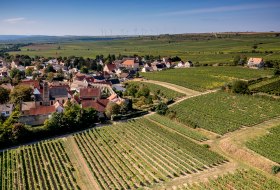
Pinot wines and sparkling wines at the Fleckenmauer The single vineyard "Bürgel" is located by the famous Fleckenmauer . The vineyard was first noted in 1286 with the name "retro montem" (Latin: retro for behind, and mons for mountain). A hundred years later, in 1358, someone wrote down "uf dem berge"(engl. “on the mountain”), which became "Bürgel". Pinot grape varieties like Pinot Gris, Blanc and Noir grow especially well here. In addition to fertile loess and marl soil, the ochre-coloured limestone "terra fusca" is…
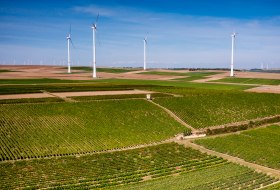
Of hooves and limestone rocks - a Riesling prime vineyard In the past, farmers farmed their land with horses or oxen. The term "Hufe" or "Huffe" was a unit of measurement for a piece of land. In 1490, it was noted that 5 Hufen were worth 5 Mausi (a payment). The term "Hube" developed from "Hufe". In 1610, the location "am Hubacker" was mentioned in a document for the first time. Here Riesling grows on loess, clay marl and limestone rock. Expressiveness, filigree, minerality and ripeness potential at the highest level! In 2000, the Keller…

The location was 1490 to 1525 with the name "in the Sawloch" documented. Domestic or wild boars wallowed in this mud in the mud.
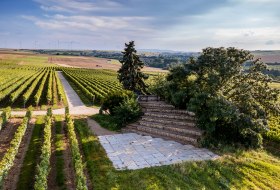
11,000 virgins, an open-air stage, a wide variety of wines. The name of the vineyard refers to the former Himmelgarten monastery in Alzey. It is dedicated to Saint Mary, the 11,000 Virgins and Saint John and was located in the western suburb of Alzey. Cistercian nuns lived there, since at least 1281. The single vineyard was first mentioned in a document in 1426 with the name "hinder hymmelgarten". No structural remains of the monastery are recognisable. However, the name remained. Various grape varieties grow on chalky, sandy loam. The…
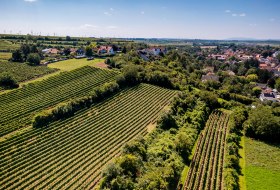
The drink of the teacher - wines from the limestone Which doctor is meant here? The doctor, the schoolmaster, a scholar? It is assumed, that the rights to use the vineyard belonged to the village schoolmaster. Apparently he was a foodie, as the vineyard is pure limestone. The humus layer is very thin. This produces mineral and salty wines. The acidity is well buffered by the limestone. Especially Pinots grow very well here. In former quarries - used by the inhabitants for centuries – dedicated winegrowers planted vines again.…
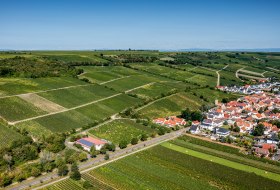
Once owned by the counts: limestone-rich vineyards for elegant wines Birds of prey certainly fly their courses here, but they are not the origin of the name. Above Dienheim lies the "Falkenberg" vineyard. The name probably goes back to the "Counts of Falkenstein". In 1423, the mayor and council of the town of Oppenheim had jurisdiction over the Dienheim field parcel. From 1429 to 1497, Oppenheim belonged to the Counts of Falkenstein. So the people of Dienheim were also subjects of the counts. The Falkenberg stands for fine-fruited, elegant…

The layer designation is based on a former cross chapel.

The location name is based on the castle near Dexheim, of which only part of the tower is left after a fire in 1683.

Military horsemen, noble tables and fertile soils In the Middle Ages, noble families received tributes from their people: pigs, cheese or wine. The so-called "Tafelgüter". It is assumed that the camp name "Tafelstein" refers to this. The vines between Dienheim and Ludwigshöhe grow on deep loess, loam and lime marl. Ideal for Riesling, Pinot Noir and other varieties. The soils are fertile with good water storage capacity. The "Siliusbrunnen" (Silius Well) located there refers to the horseman Silius, who served in a Roman cavalry…
Rheinhessenwein e.V.
Otto-Lilienthal-Straße 4
55232 Alzey
E-Mail: info@rheinhessenwein.deRheinhessenwein e.V.
Otto-Lilienthal-Straße 4
55232 Alzey
E-Mail: info@rheinhessenwein.de